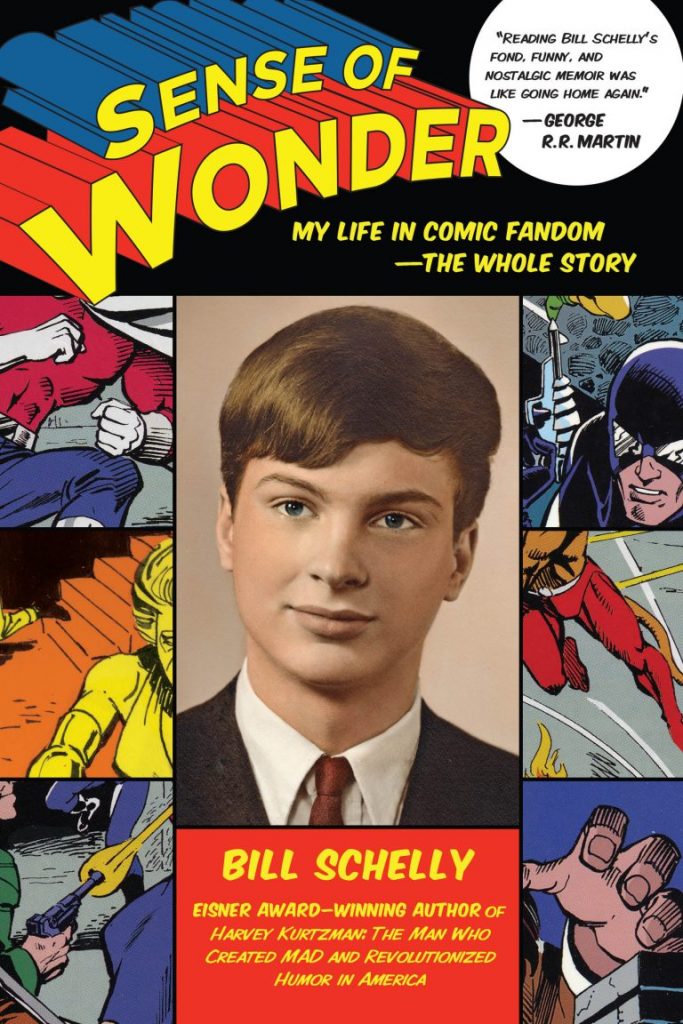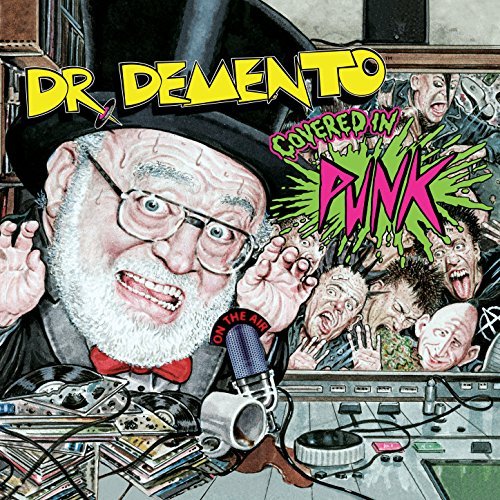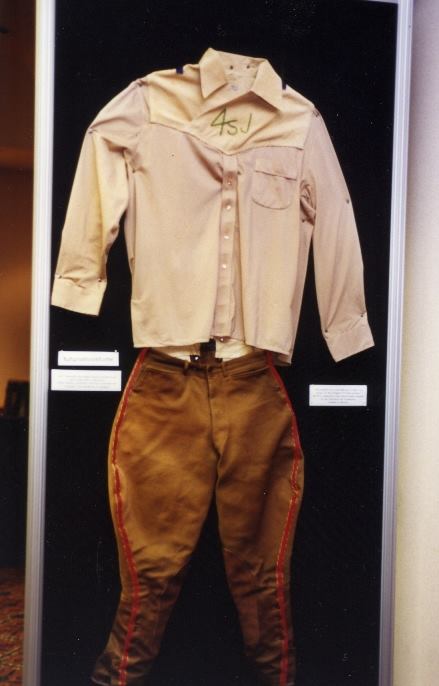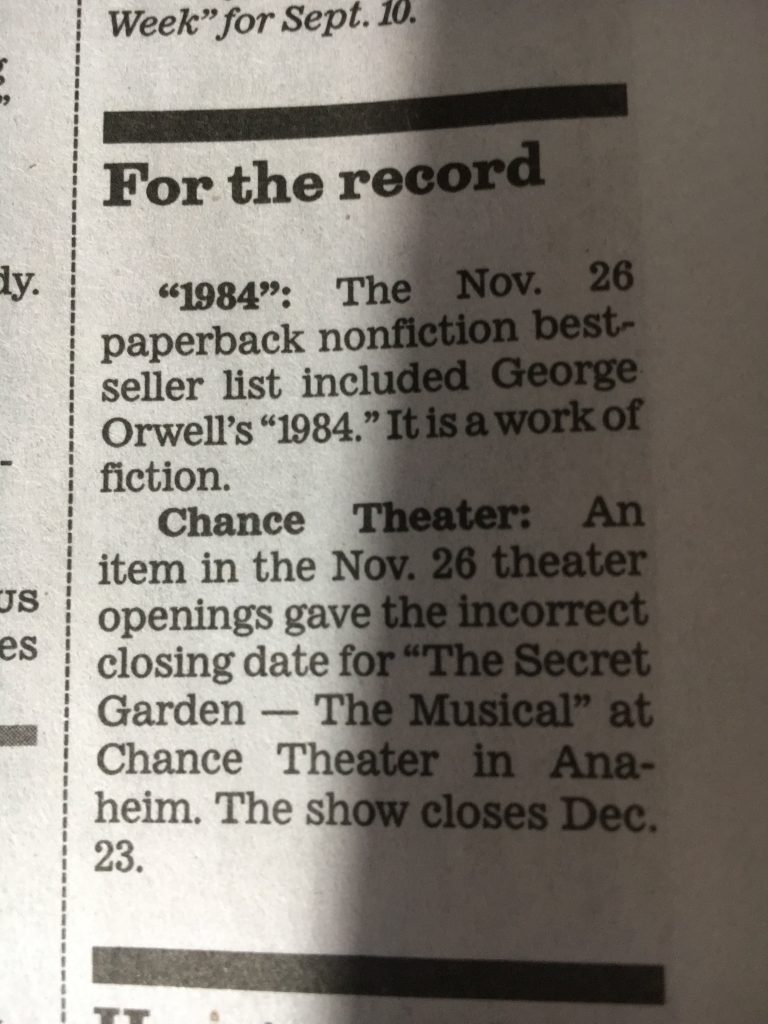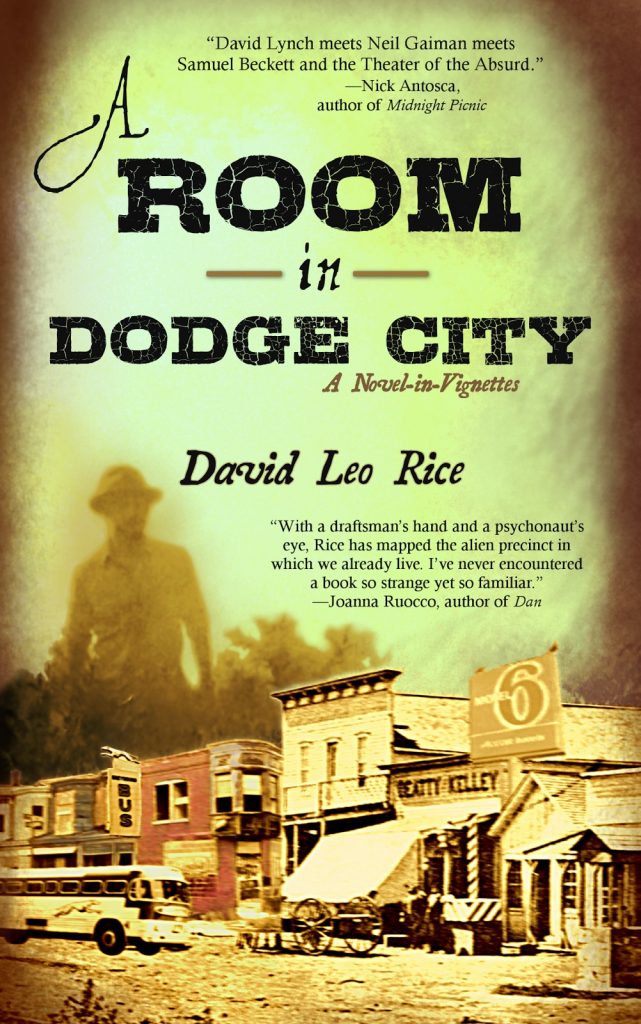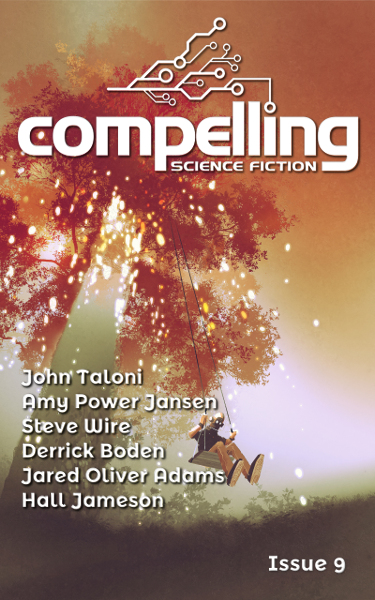(1) ELVES FOREVER. Olga Polomoshnova explores Elves’ immortality in “Who wants to live forever?” at Middle-Earth Reflections.
By their nature the Elves are bound to Arda, with their bodies being made of “the stuff of Earth”. They live as long as the world endures….
What Men crave for and desire with all their hearts is, in fact, a burden. More accurately, this serial longevity becomes a burden with time. The Elves age very slowly, but during the course of their long lives they know death of wounds or grief, though not, like Men, of old age, and they fear death, too. Elvish ageing shows in their ever-growing weariness of the world. One of the best descriptions of this state was provided by the Hobbit Bilbo Baggins, who experienced such longevity due to his possession of the One Ring. He compared his unnaturally long life with being “all thin, sort of stretched, […] like butter that has been scraped over too much bread” (Fellowship of the Ring, p. 42). So probably that is exactly how the Elves could feel many thousand years into their lives.
(2) HAMILL’S WALK OF FAME STAR DEDICATED. Star Wars icon Mark Hamill is now a star in the Hollywood firmament: “Mark Hamill Gets ‘Overwhelming’ Support From Harrison Ford & George Lucas at Walk of Fame Ceremony”.
Happy #JediDay! Celebrate with us as @HamillHimself gets his star on the Walk of Fame. pic.twitter.com/wOHEPzR7Lg
— Star Wars (@starwars) March 8, 2018
On Thursday, some of the actor’s closest friends and colleagues came out to honor him as he was immortalized in Hollywood with the recognition befitting a cultural icon like himself.
Hamill got some sweet support from his former Star Wars co-star Harrison Ford, Star Wars creator George Lucas, recent Last Jedi co-star Kelly Marie Tran, as well as a pair of Storm Troopers and the iconic droid R2-D2. His wife of nearly 40 years, Marilou York, was also to celebrate the honor.
(3) CROWDFUNDING WILL REVIVE AMAZING. Steve Davidson has launched a Kickstarter to hasten “The Return of Amazing Stories Magazine!”
Amazing Stories is an institution. It is an icon of the field. Over the years it has represented both the best and the worst that this genre has to offer. It has inspired the careers of authors, artists, editors, academics, scientists and engineers. Its presence proved that there was a viable market for this kind of literature, a fact not lost on other publishers who quickly followed suit. By 1930 there were four magazines in the field, eventually many more. And the fans? They bought every single one of them.
Amazing Stories deserves to be an ongoing part of our community. It may be a bit worn around the edges, the spine may be cracked a little and it may shed bits of pulp here and there, but those are love scars. Amazing Stories is not just our progenitor, it is the embodiment of the heart and soul of the genre.
We love it. We love what it’s done for us, what it represents, what it created. How can we not, when we love Science Fiction?
We know you share that love. Please show that love. It’s time for Amazing Stories to live again.
On the first day Steve’s appeal brought in $5,079 of its $30,000 goal.
Here’s how the money will be used. (Experimenter Publishing is Steve’s company.)
Experimenter plans to publish its first new issue for a Fall 2018 release and will be distributing the magazine at Worldcon 76 in San Jose CA. Professional, SFWA qualifying rates of 6 cents per word will be paid and Experimenter intends to become a fully SFWA qualifying market within its first year of operation. Several stories by well known authors have already been contracted, as has cover art by a highly respected artist.
Following five years of growth and development as an online multi-author blog serving the interests of science fiction, fantasy and horror fans, the publication of well-regarded articles produced by over 175 contributors, read by over 40,000 registered members, and following the publication of three special editions, a comic book and a growing selection of anthologies, classic novels and facsimile reprints, Experimenter believes the time is right to launch the quarterly magazine.
(4) ABOUT THE BARKLEY PROPOSAL. What were signers of Chris Barkley’s YA Award name proposal told? One of them, Shawna McCarthy, wrote in a comment on Facebook:
I was a signatory and do not feel misrepresented to other than not knowing the name of the award had already been decided. It’s possible the sponsor thought I was more up on the state of WC business committee work than I was.
(5) COMIC-CON’S QUASI-MUSEUM. Kinsee Morlan, in “Don’t Call Comic-Con’s Balboa Park Digs A museum–At Least Not Yet” for Voice of San Diego, says that Comic-Con International is upholding its nonprofit status by building a museum in San Diego’s Balboa Park (which will replace the San Diego Hall of Champions) and is hiring British museum designer Adam Smith to create it.
Smith said specifics are still hazy, but a few things are starting to become clear. For starters, he’s not ready to dub the new space a museum just yet. He’s toying with calling it a center or something else that better communicates its mission of showcasing contemporary exhibits that focus on what’s happening now or in the future — think virtual reality demos or participatory immersive television experiences (yeah, that’s a thing).
Smith also obliterated the traditional curator-led exhibition model. Instead of experts organizing most of the shows, he said, super fans will be likely be generating exhibitions and events. That’s a move taken from Comic-Con’s convention playbook, where fan-generated panels have always been a big part of the offerings.
David Glanzer, Comic-Con’s director of communications who’s been with the nonprofit for decades, fielded some of my questions, too.
Civic leaders are perpetually terrified that Comic-Con will pack up its bag and head to Los Angeles or another city if San Diego doesn’t expand its Convention Center soon. Glanzer said folks should not assume that won’t happen now that Comic-Con’s new center is opening in Balboa Park. He said they’re two separate projects and the convention could still relocate in the future if its space problems start impacting the quality of the convention.
(6) LOVED THE BOOK, HATED THE FILM. LitHub list of “20 Literary Adaptations Disavowed by Their Original Authors” has plenty of sff:
- Earthsea (2004) – Based on: Ursula K. Le Guin, Earthsea cycle (1968-2001)
Le Guin hated the Sci-Fi Channel’s adaptation of her books, and she had quite a lot to say on the subject, but the biggest problem was that the miniseries completely whitewashed the original text. Early on, she was consulted (somewhat) but when she raised objections, they told her that shooting had already begun. “I had been cut out of the process,” she wrote at Slate.
Also:
- Mary Poppins (1964) – Based on: P. L. Travers’s Mary Poppins (1934)
- Hellraiser: Revelations (2011) – Based on: Clive Barker’s The Hellbound Heart (1986)
- A Wrinkle in Time (2003) – Based on: Madeleine L’Engle’s A Wrinkle in Time (1962)
- Charlotte’s Web (1973) – Based on: E. B. White’s Charlotte’s Web (1952)
- Solaris (1972, 2002) – Based on: Stanis?aw Lem’s Solaris (1961)
- The Last Man on Earth (1964) – Based on: Richard Matheson’s I Am Legend (1954)
- A Clockwork Orange (1971) – Based on: Anthony Burgess’s A Clockwork Orange (1962)
- The Shining (1980) – Based on: Stephen King’s The Shining (1977)
- The NeverEnding Story (1984) – Based on: Michael Ende’s The Neverending Story (1979)
- Willy Wonka & the Chocolate Factory (1971) – Based on: Roald Dahl’s Charlie and the Chocolate Factory (1964)
(7) LOPATA OBIT. Steve Lopata’s daughter announced that he passed away March 5, peacefully, at the hospital in Little Rock, Arkansas. Sammi Owens said:
…I deeply regret to inform you that his heart was failing and Worldcon 75 Helsinki was his last trip. He had heart surgery and despite valiant efforts he succumbed to his heart disease on March 5, 2018…. My mom Frances and I want the scifi community and all his friends to know how much he dearly loved you all. His all time favorite activities were working Ops for Worldcons and having an audience for his tales- umm, I mean true stories…. Peace be with you all and thank you for your friendship to our beloved man.
Patrick Maher was one of many fans who worked Ops with Steve with good words about him:
I didn’t know Steve very long, only since he walked into Shamrokon in 2014 and offered to help out. We didn’t know who he was but, as he said he had just come from Loncon III, we asked James Bacon who he was. James described him as Steve ‘Awesome Ops Guy’ Lopata. He sat in Ops all weekend and offered sage advice. When I took over Ops for Worldcon 75 in Helsinki, he was the first person I went to for advice.
Lopata also did volunteer work with big cats, as he explained in an article for Mimosa in 2001.
One of the first questions I am asked when I tell people about working with lions and tigers is, “How did you get involved?” There are two answers. First the short, “I like kitties;” and the longer one, “I was at a convention and saw this guy walking a tiger on a leash. I asked if I could pet the tiger and about half an hour later, I was a volunteer at the breeding park.”
(8) COMICS SECTION.
- Chip Hitchcock calls this too bad not to share: Arlo and Janis.
- And here’s an International Women’s Day item from Bizarro.
(9) INTERNATIONAL WOMEN’S DAY. Headstuff’s Aoife Martin celebrated the day by analyzing “Author Pseudonyms” used by women. A couple of instances came from sff —
Closer to modern times we have the case of Alice Bradley Sheldon who wrote science fiction under the pen name of James Tiptree Jr. In an interview she said that she chose a male name because it “seemed like good camouflage. I had the feeling that a man would slip by less observed. I’ve had too many experiences in my life of being the first woman in some damn occupation.” It’s interesting that Sheldon should have felt the need to do this but she was a successful science fiction writer – so much so that she won several awards including a Hugo for her 1974 novella, The Girl Who Was Plugged In and several Nebula awards. Her secret wasn’t discovered until 1976 when she was 61. Throughout her career she was referred to as an unusually macho male and as an unusually feminist writer (for a male). Indeed, fellow writer Robert Silverberg once argued that Tiptree could not possibly be a woman while Harlan Ellison, when introducing Tiptree’s story for his anthology Again, Dangerous Visions wrote that “[Kate] Wilhelm is the woman to beat this year, but Tiptree is the man.” Suitably, the James Tiptree Jr. Award is given annually in her honour to works of science fiction and fantasy that expand or explore one’s understanding of gender.
(10) A NEW KIND OF BARBIE. The Huffington Post reports Mattel is honoring a few living legends this International Women’s Day: “Frida Kahlo And Other Historic Women Are Being Made Into Barbies”. Genre-related figures include Katherine Johnson and Patty Jenkins.
Kids around the world will soon be able to own a Barbie doll bearing the likeness of Frida Kahlo, Amelia Earhart or Katherine Johnson.
All three women made herstory in different industries: Earhart was the first female aviator to fly across the Atlantic Ocean; Mexican artist Kahlo was known for her unique painting style and feminist activism; and Johnson, who was highlighted in the 2016 film “Hidden Figures,” broke boundaries for black women in mathematics and calculated dozens of trajectories for NASA, including the 1969 Apollo 11 flight to the moon.
The dolls, which are part of Mattel’s new series called “Inspiring Women,” will be
mass produced and sold in stores….
(11) ANOTHER STAR WARS SERIES. A well-known name in superhero movies will be responsible for a Star Wars series to appear on Disney’s new streaming platform: “Jon Favreau hired for ‘Star Wars’ series: Why fans have mixed feelings”.
The director whose film launched the Marvel Cinematic Universe is coming to a galaxy far, far away. Jon Favreau, the filmmaker behind Iron Man, Elf, and Disney’s live-action Jungle Book and Lion King, will write and executive-produce a live-action Star Wars series for Disney’s new streaming platform. Lucasfilm announced today that Favreau, who is also an actor with roles in the Clone Wars animated series and the upcoming Solo: A Star Wars Story, will helm the new show. While Favreau has a strong fanbase (going all the way back to his 1996 debut film Swingers), many on social media are wondering why Lucasfilm has hired yet another white man to steer the diverse Star Wars universe — and announced it on International Women’s Day, no less.
(12) STORYBUNDLE. Cat Rambo curated The Feminist Futures Bundle, which will be available for the next three weeks.
In time for Women’s History Month, here’s a celebration of some of the best science fiction being written by women today. This bundle gathers a wide range of outlooks and possibilities, including an anthology that gives you a smorgasbord of other authors you may enjoy.
I used to work in the tech industry, and there I saw how diversity could enhance a team and expand its skillset. Women understand that marketing to women is something other than coming up with a lady-version of a potato chip designed not to crunch or a pink pen sized for our dainty hands. Diversity means more perspectives, and this applies to science fiction as well. I am more pleased with this bundle than any I’ve curated so far.
In her feminist literary theory classic How to Suppress Women’s Writing, science fiction author Joanna Russ talked about the forces working against the works of women (and minority) writers. A counter to that is making a point of reading and celebrating such work, and for me this bundle is part of that personal effort, introducing you to some of my favorites. – Cat Rambo
The initial titles in the Feminist Futures Bundle (minimum $5 to purchase) are:
- Happy Snak by Nicole Kimberling
- Alanya to Alanya by L. Timmel Duchamp
- Code of Conduct by Kristine Smith
- The Birthday Problem by Caren Gussoff
If you pay at least the bonus price of just $15, you get all four of the regular titles, plus SIX more!
- Starfarers Quartet Omnibus – Books 1-4 by Vonda N. McIntyre
- The Steerswoman by Rosemary Kirstein
- Spots the Space Marine by M.C.A. Hogarth
- The Terrorists of Irustan by Louise Marley
- Queen & Commander by Janine A. Southard
- To Shape the Dark by Athena Andreadis
(13) FAIL HYDRA. Cory Doctorow updated BoingBoing readers about a publisher accused of questionable practices: “Random House responds to SFWA on its Hydra ebook imprint”
Allison R. Dobson, Digital Publishing Director of Random House, has written an open letter to the Science Fiction Writers of America responding to the warning it published about Hydra, a new imprint with a no-advance, author-pays-expenses contract that SFWA (and I) characterize as being totally unacceptable. Dobson’s letter doesn’t do much to change my view on that:
(14) BEARING WITNESS. Lavie Tidhar has tweeted a noir Pooh adventure. Jump on the thread here:
Her name was Kanga and she was trouble. She came into my office as I was about to dip into a honeypot. I liked honey the way priests love God.
"You are Pooh? The detective?" she said.
"I live under the name of Sanders. What's it to you?"
"My boy," she said. "Roo. He's missing."— Lavie Tidhar (@lavietidhar) March 6, 2018
(15) ANDROIDS AT 50. Here’s a clipping from Nature: “Do Androids Dream of Electric Sheep? Ananyo Bhattacharya toasts Philip K. Dick’s prescient science-fiction classic as it turns 50.” [PDF file.]
When science-fiction writer Peter Watts first opened Philip K. Dick’s 1968 Do Androids Dream of Electric Sheep?, a word caught his eye. It was “friendlily”. How had Dick got that past an editor? As Watts told me: “I knew at that point that Dick had to be some kind of sick genius.”
(16) CURRENT EVENTS. This sounds like a job for Doctor Who: “A Political Dispute Puts A Wrinkle In Time, Slowing Millions Of European Clocks”.
For the past few weeks, something strange has been happening in Europe. Instead of time marching relentlessly forward, it has been slowing down imperceptibly, yet with cumulatively noticeable results, so that millions of clocks the Continent-over are now running behind.
The European Network of Transmission System Operators for Electricity released a statement Tuesday saying that since mid-January, Europe’s standard electrical frequency of 50 hertz has fallen ever so slightly to 49.996 hertz.
For electric clocks that rely on the frequency of the power system — typically radio, oven and heating-panel clocks — the cumulative effect was “close to six minutes,” according to the agency.
(17) TAINT FUNNY MCGEE. The BBC says “Amazon promises fix for creepy Alexa laugh”.
Amazon’s Alexa has been letting out an unprompted, creepy cackle – startling users of the best-selling voice assistant.
The laugh, described by some as “witch like” was reported to sometimes happen without the device being “woken” up.
Others reported the laugh occurring when they asked Alexa to perform a different task, such as playing music.
“We’re aware of this and working to fix it,” Amazon said.
(18) CUBE ROUTER. Meanwhile, at MIT, they’re wasting their time saving time: “Rubik’s robot solves puzzle in 0.38 seconds”.
Ben Katz, a student at the Massachusetts Institute of Technology, collaborated with Jared Di Carlo to create the robot.
“We noticed that all of the fast Rubik’s Cube solvers were using stepper motors and thought that we could do better if we used better motors,” said Mr Di Carlo in a blog post.
Mr Katz said in his blog the 0.38 seconds included “image capture and computation time, as well as actually moving the cube”.
Their contraption used two PlayStation Eye cameras from the old PS3 console to identify the configuration of the cube.
However, mistakes often resulted in a cube being destroyed.
(19) DARK MATTER. The Arthur C. Clarke Center for Human Imagination released a video of a recent guest presentation: “Sir Roger Penrose: New Cosmological View of Dark Matter, which Strangely and Slowly Decays”.
Sir Roger Penrose joined the Arthur C. Clarke Center for Human Imagination on January 19, 2018, to give a talk on his latest research and provide an insight into the thinking of a modern day theoretical physicist. Is the Universe destined to collapse, ending in a big crunch or to expand indefinitely until it homogenizes in a heat death? Roger explains a third alternative, the cosmological conformal cyclic cosmology (CCC) scheme—where the Universe evolves through eons, each ending in the decay of mass and beginning again with new Big Bang. The equations governing the crossover from each aeon to the next demand the creation of a dominant new scalar material, postulated to be dark matter. In order that this material does not build up from aeon to aeon, it is taken to decay away completely over the history of each aeon. The dark matter particles (erebons) may be expected to behave almost as classical particles, though with bosonic properties; they would probably be of about a Planck mass, and interacting only gravitationally. Their decay would produce gravitational signals, and be responsible for the approximately scale invariant temperature fluctuations in the CMB of the succeeding aeon. In our own aeon, erebon decay might well show up in signals discernable by gravitational wave detectors.
(20) HANDY HINTS. And in case you ever have this problem: “Here’s How You Could Survive Being Sucked Into a Black Hole”. The article is honestly kind of useless, but I love the clickbait title.
OK, so maybe you aren’t going to get sucked into a black hole tomorrow. Or ever. Maybe even trying to imagine being in such a situation feels like writing yourself into a Doctor Who episode. But, for mathematicians, physicists, and other scientists attempting to understand cosmic strangeness in practical terms, these thought experiments are actually very useful. And they may be more practical in and of themselves than we’d realized.
At least, that’s what a team of researchers led by Peter Hintz at the University of California, Berkeley found through their study of black holes, recently published in the journal Physical Review Letters.
[Thanks to Standback, Will R., John King Tarpinian, JJ, Cat Eldridge, Chip Hitchcock, Martin Morse Wooster, Andrew Porter, J. Cowie, and Carl Slaughter for some of these stories. Title credit goes to File 770 contributing editor of the day OGH.]



